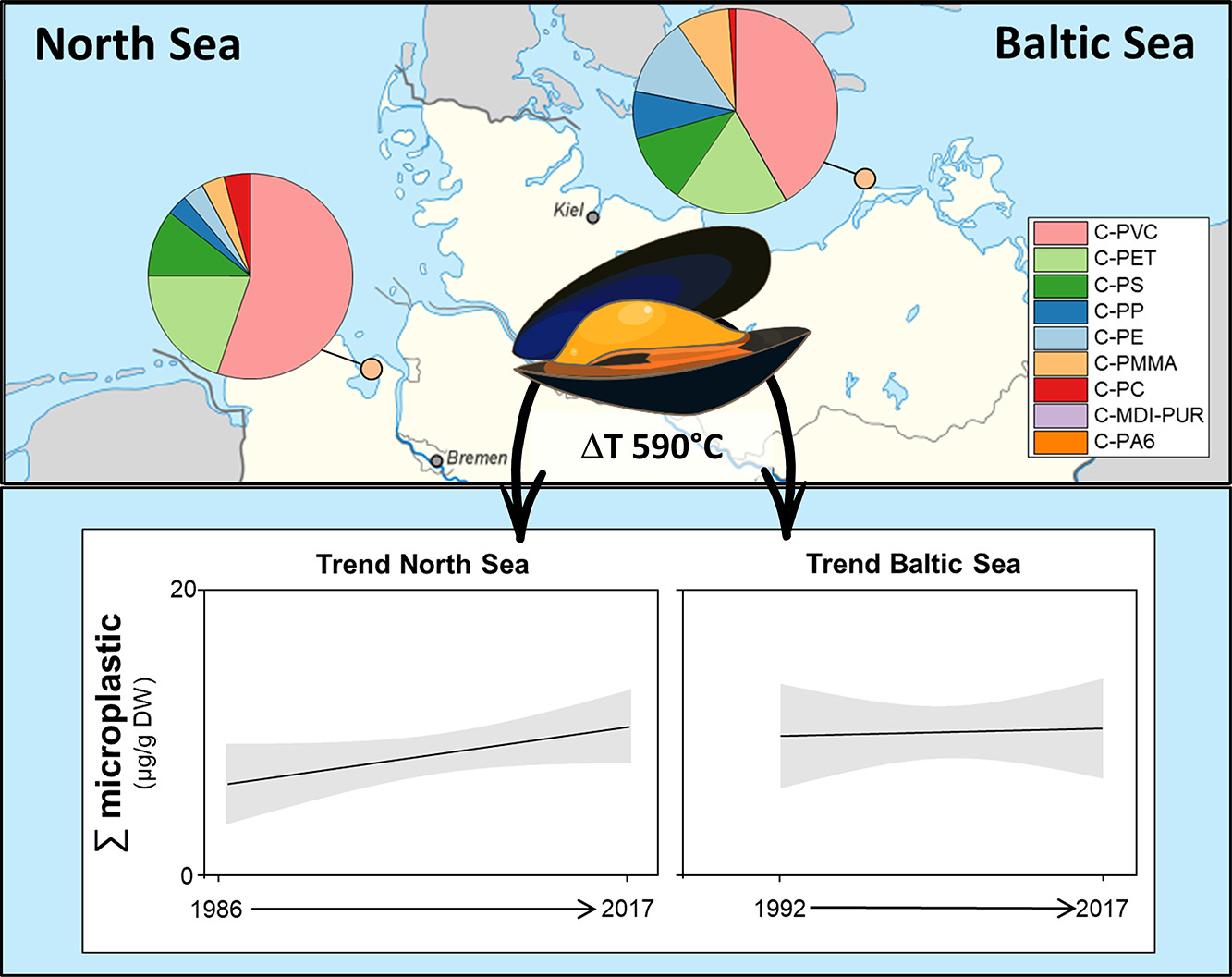30 years trends of microplastic pollution: Mass-quantitative analysis of archived mussel samples from the North and Baltic Seas
Halbach, Maurits; Vogel, Miriam; Tammen, Juliane K.; Rüdel, Heinz; Koschorreck, Jan; Scholz-Böttcher, Barbara M.
Sci Total Environ, 826 (2022), 154179, online 26. Februar 2022
Abstract
Microplastics (MP) are ubiquitous throughout the environment as a result of an ongoing, increasing, but also lavish use, of plastics over time and its inherent persistence. In contrast, there are almost no data that allow drawing conclusions about the evolution of plastic pollution in the environment over the past decades.
This study investigates the MP load in blue mussels from the North and Baltic Sea archived by the German Environmental Specimen Bank in a time series covering almost 30 years. Samples were enzymatically and chemically oxidative digested for MP extraction and subsequent analyzed mass-quantitatively for nine common polymer clusters by pyrolysis gas chromatography-mass spectrometry. Seven polymer clusters were detected in mussel tissue. Summed MP levels were at ppm levels (<20 μg/g mussel, dry weight). North Sea samples reflected a gradual increase from the 1980s/90s to the 2000s whereas those from Baltic Sea showed consistently higher, rather constant MP levels similar to the North Sea site later than 2000. Polymer composition of both sites stood out by cluster (C) of C-PVC and C-PET at both sites. Mussels from Baltic Sea site had larger C-PE and C-PP proportions. Opposed polymer- and site-specific trends indicated both regional and trans-regional MP sources for different polymer clusters. The MP composition of mussels showed strong similarities with adjacent sediment and water samples.
The study introduces a relevant dataset addressing the temporal development of MP pollution. It emphasizes a high indicative potential of environmental MP composition/loads received by mussels but raises the necessity on adequate control materials accompany such kind of studies.
doi: 10.1016/j.scitotenv.2022.154179
